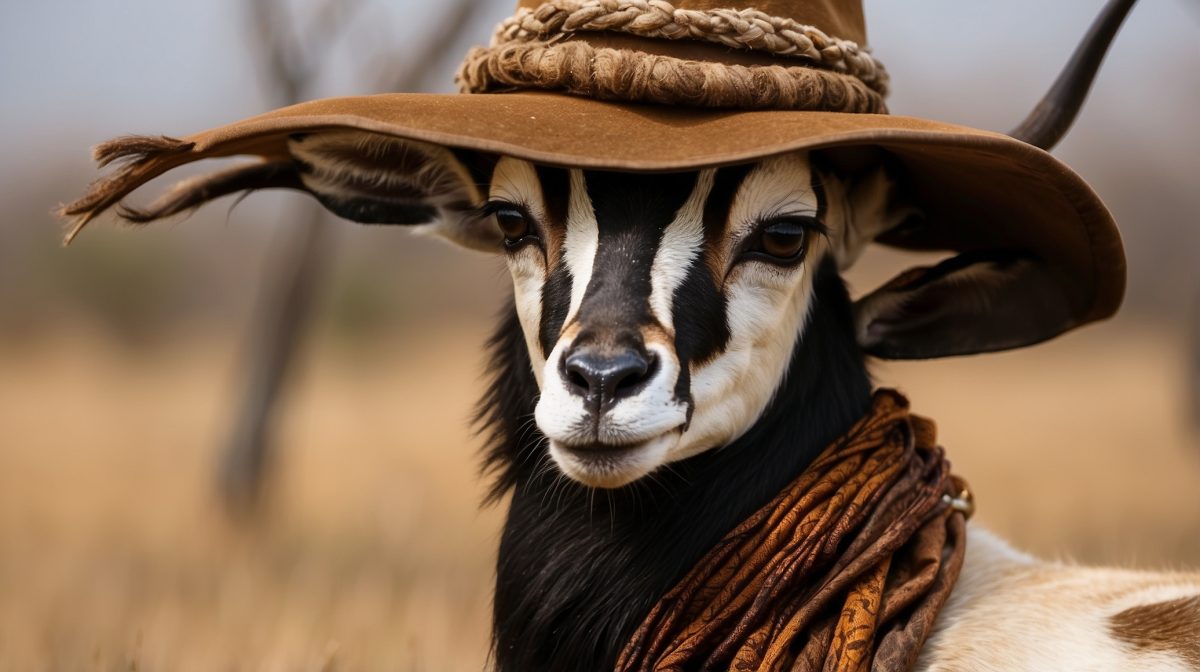Understanding Blackbuck Antelope Behavior and Habitat
Blackbuck antelope, I tell you, they’re as keen as they come with senses that can pick you out from a mile away if you’re not careful. They’re agile to boot, which makes huntin’ them a real challenge. These antelopes are creatures of habit, often frequentin’ the same areas for feedin’ and restin’, so knowin’ where to look is half the battle. They favor open fields and light woodlands, but they’re also fond of the brushy terrain we got plenty of here in Texas Hill Country.
Now, to identify signs of blackbuck presence, keep your eyes peeled for tracks, droppings, and grazin’ patches. They’re social animals, so look for herds, especially durin’ the early mornin’ or late evenin’ when they’re most active. Understandin’ these patterns and behaviors will give you the upper hand when you’re out in the field, lookin’ to spot these beauties before you make your stalk.
Preparing for the Hunt
Before you set foot outside, make sure you’re packin’ the right gear. Camouflage is key; you’ll want to blend in with the Texas brush. Optics are another must-have, with a good pair of binoculars or a spotting scope to help you spot blackbuck from afar without spookin’ them. And don’t forget a reliable rifle and ammo suited for the task at hand.
Scoutin’ is just as important as any piece of gear. Get to know the land you’ll be huntin’ on, find those vantage points, and learn the blackbuck’s routines. Pre-hunt preparation can make or break your hunt, so invest some time in this step and it’ll pay off when you’re out there with the antelope in your sights.
Spotting Techniques
Spotting blackbuck antelope is an art in itself. You’ll want to use those binoculars or spotting scope to scan the horizon and find your quarry before they find you. Start with wide sweeps to cover ground, then focus in on likely spots where blackbuck may be hidin’.
Finding the right vantage point can make all the difference. Look for elevated areas that give you a broad view of the terrain while keepin’ you concealed. Glassin’ techniques, such as grid searchin’ and systematic scannin’, will help you pick out movement or the silhouette of an antelope against the brush. It’s all about patience and attention to detail.
Stalking Fundamentals
Once you’ve spotted your target, the real fun begins. Stalkin’ blackbuck antelope requires a mix of stealth and smarts. You’ll need to approach without bein’ detected, which means usin’ every trick in the book to stay out of sight and downwind. Move slow, plan each step, and keep your profile low.
Take advantage of the terrain and vegetation to conceal your movements. If you can move from cover to cover, you’re doin’ it right. And remember, it’s not a race; sometimes you’ll need to freeze and wait for the right moment to advance. It’s all about findin’ that balance between patience and progress.
Using Cover and Wind to Your Advantage
Natural cover is your best ally when it comes to closin’ the distance on a blackbuck. Use bushes, trees, and the contours of the land to keep yourself hidden as you move. And always be mindful of the wind; blackbuck have a nose for trouble, and if they catch your scent, it’s game over.
Keep checkin’ the wind direction as you stalk, and try to approach from downwind whenever possible. It’s one of the oldest tricks in the book, but it’s stuck around for a reason. If the wind shifts, be ready to adjust your approach accordingly to stay undetected.
The Final Approach and Making the Shot
Gettin’ within shootin’ distance of a blackbuck is a thrill, but it’s also where you need to be at your most careful. Close the distance as much as you can for a clean shot, but be ready to take it when the opportunity presents itself. Shot placement is critical; aim for the vitals to ensure a quick and ethical harvest.
And don’t forget, sometimes that first shot doesn’t go exactly as planned. Be prepared for a quick follow-up shot if necessary. Keep your wits about you, and stay focused on the animal until you’re sure of the outcome. It’s all part of bein’ a responsible hunter.
Patience and Persistence: The Hunter’s Virtue
I’ve had hunts where patience paid off after hours of waitin’ and watchin’, and I’ve had days where nothin’ seemed to go right. But every time I went out, I learned somethin’ new. Spot and stalk huntin’ is as much about the experience as it is about the end result. Each encounter with a blackbuck is a lesson in patience and persistence.
Don’t get discouraged if success doesn’t come easy. Sometimes, the blackbuck will outsmart you, and that’s alright. Take it in stride, learn from it, and get back out there. The more you hunt, the better you’ll understand these creatures and the more skilled you’ll become at the art of the stalk.
Conclusion
Well, y’all, we’ve covered quite a bit of ground here on spot and stalk techniques for hunting blackbuck antelope. Remember that these critters are sharp and can make a fool out of the best of us if we’re not careful. Stick to the techniques we’ve discussed, and you’ll increase your chances of success. Most importantly, respect the land and the animal, and you’ll come away with not just a trophy, but memories to last a lifetime.
FAQs
What’s the best time of day for spotting blackbuck antelope?
The best times are early mornin’ or late evenin’, when blackbuck are most active and visible.
Can you recommend a particular type of camouflage for Texas Hill Country?
Opt for patterns that match the local brush and foliage, like those with a mix of greens, browns, and tans.
How do you judge the quality of a blackbuck antelope for trophy hunting?
Look for horn length, thickness, and the overall symmetry when judgin’ a trophy blackbuck.
What’s the most common mistake hunters make when stalking blackbuck?
The most common mistake is movin’ too fast and not payin’ attention to the wind, which can give away your position.
Are there any specific regulations I should be aware of when hunting blackbuck in Texas?
Yes, always check the latest Texas Parks and Wildlife regulations for licensin’, seasons, and bag limits.


